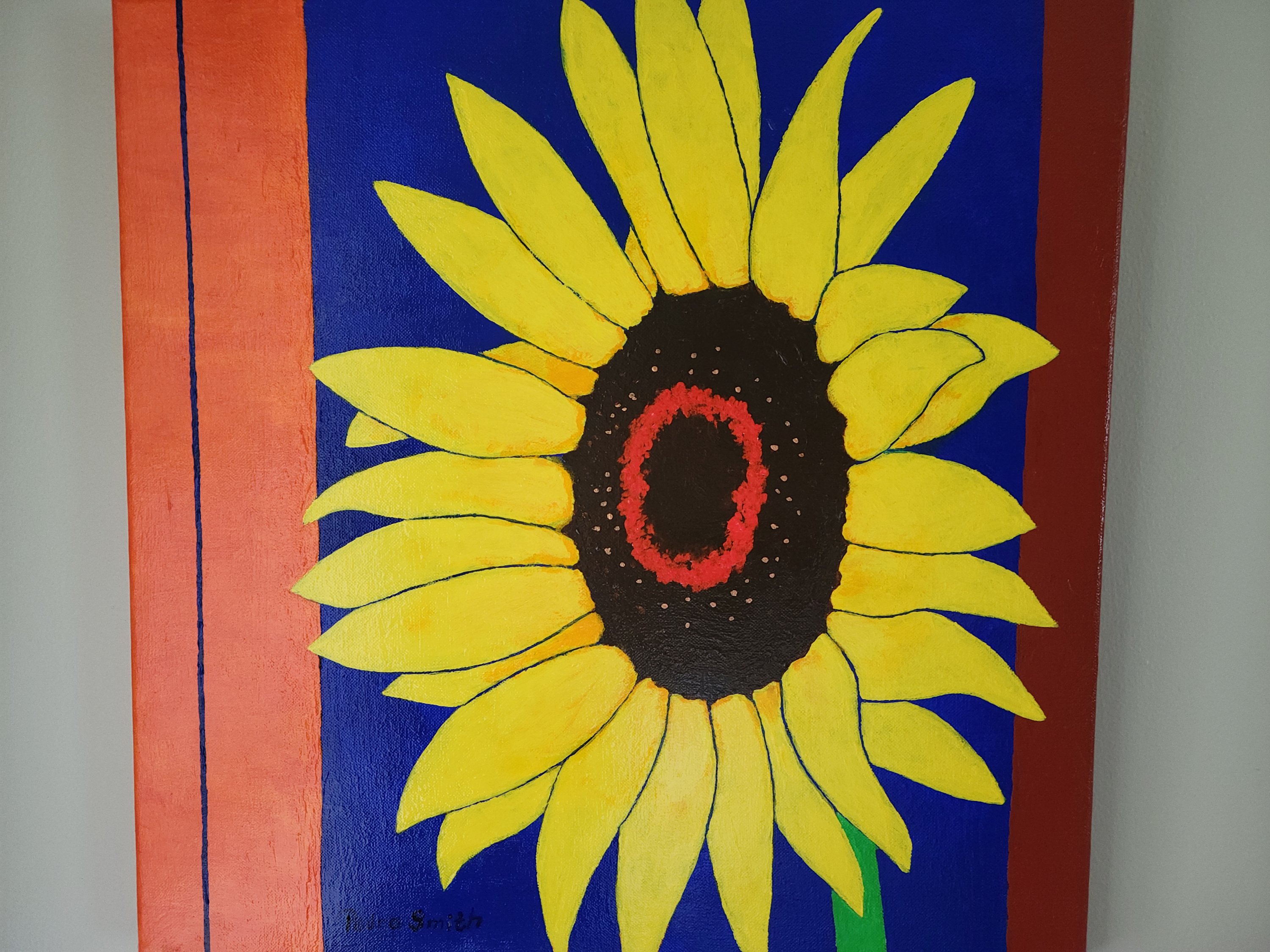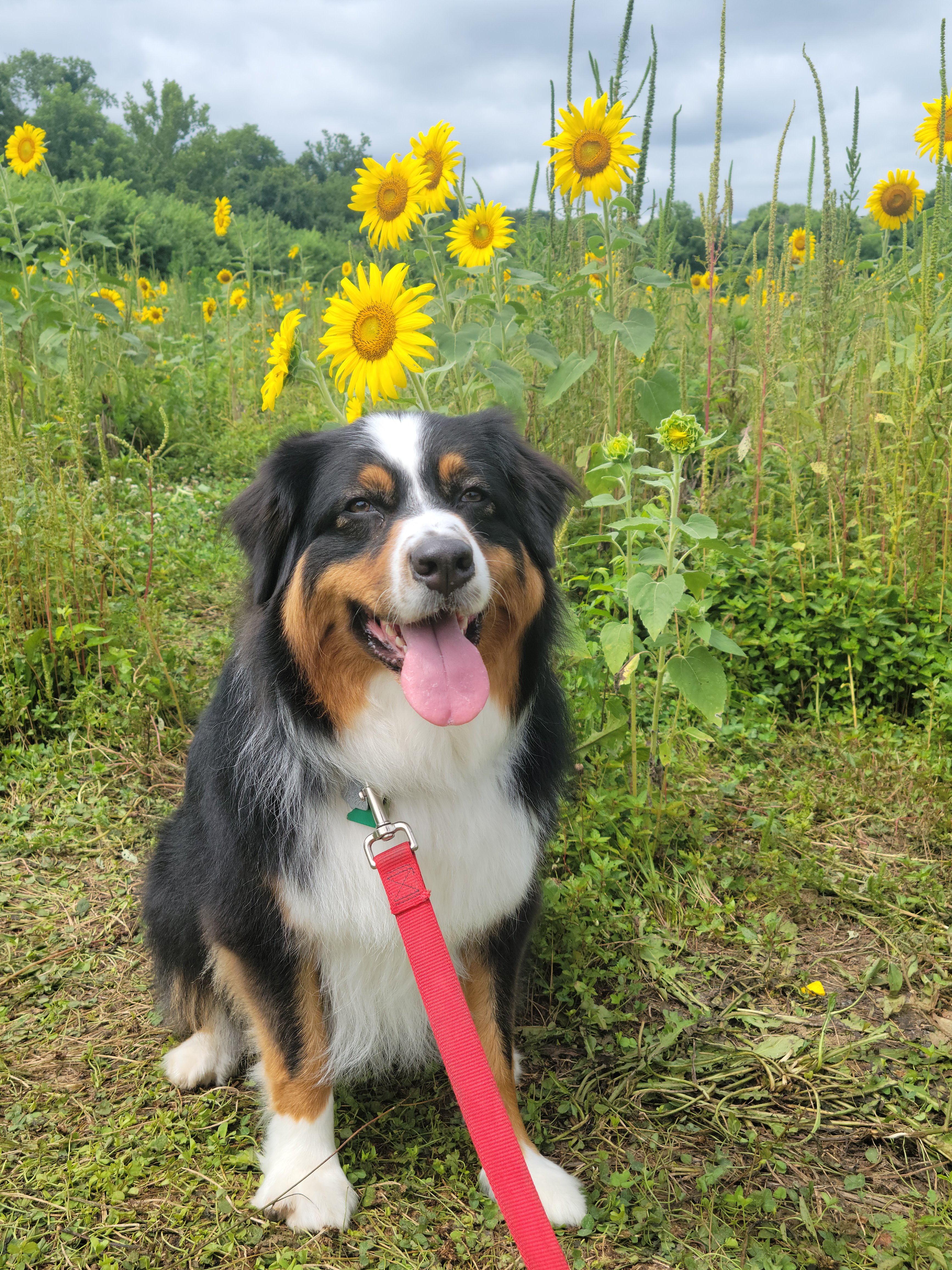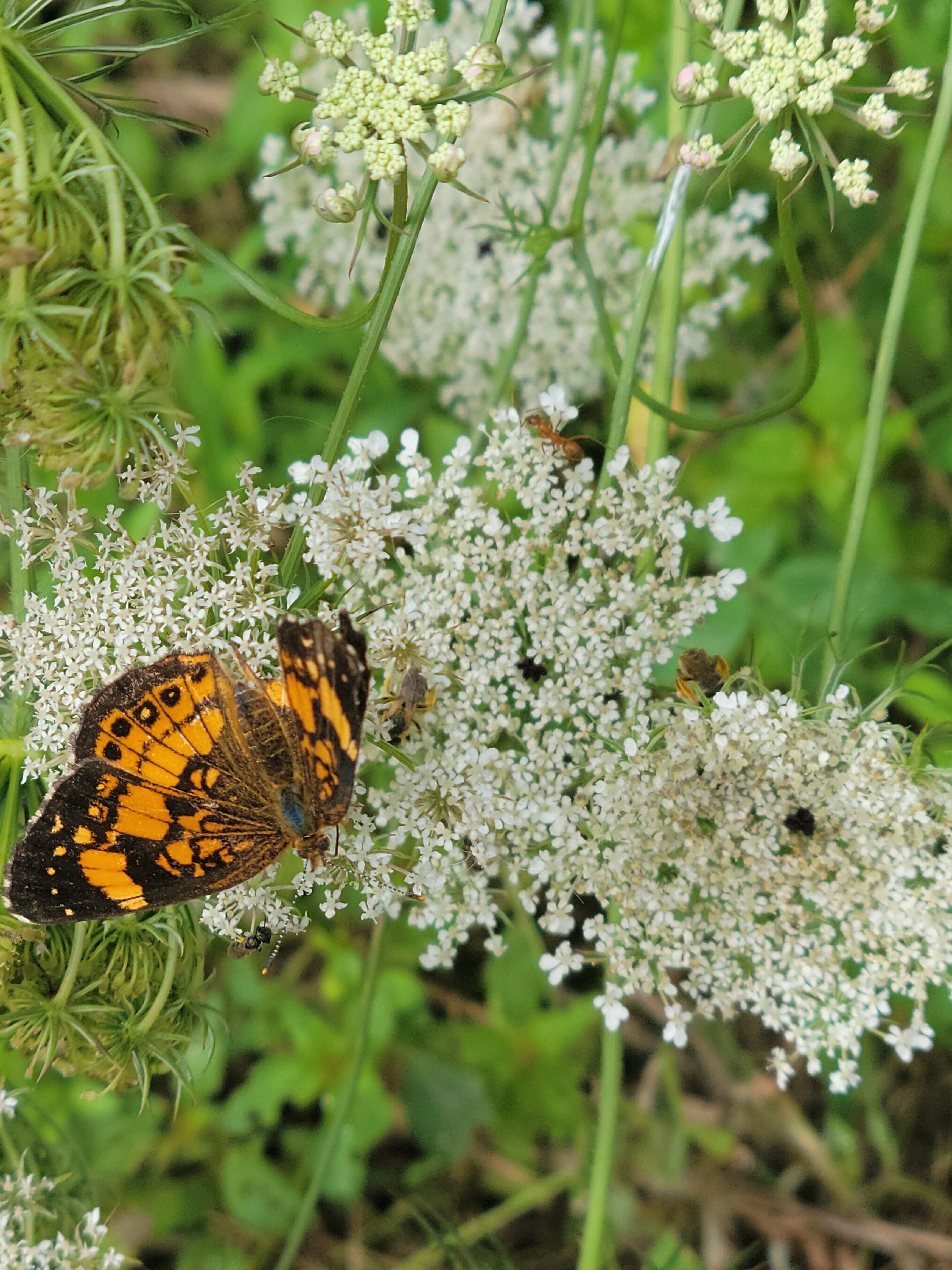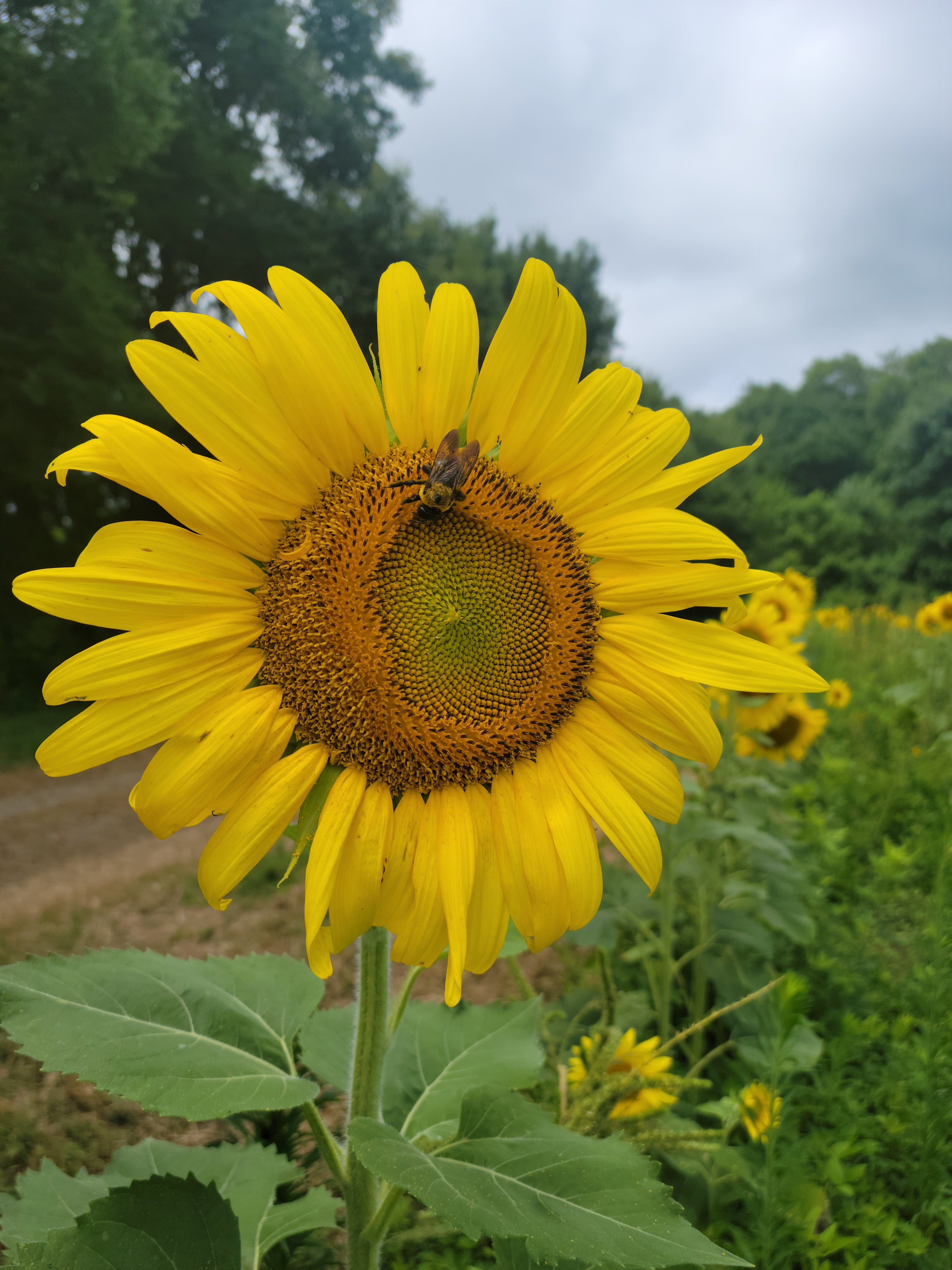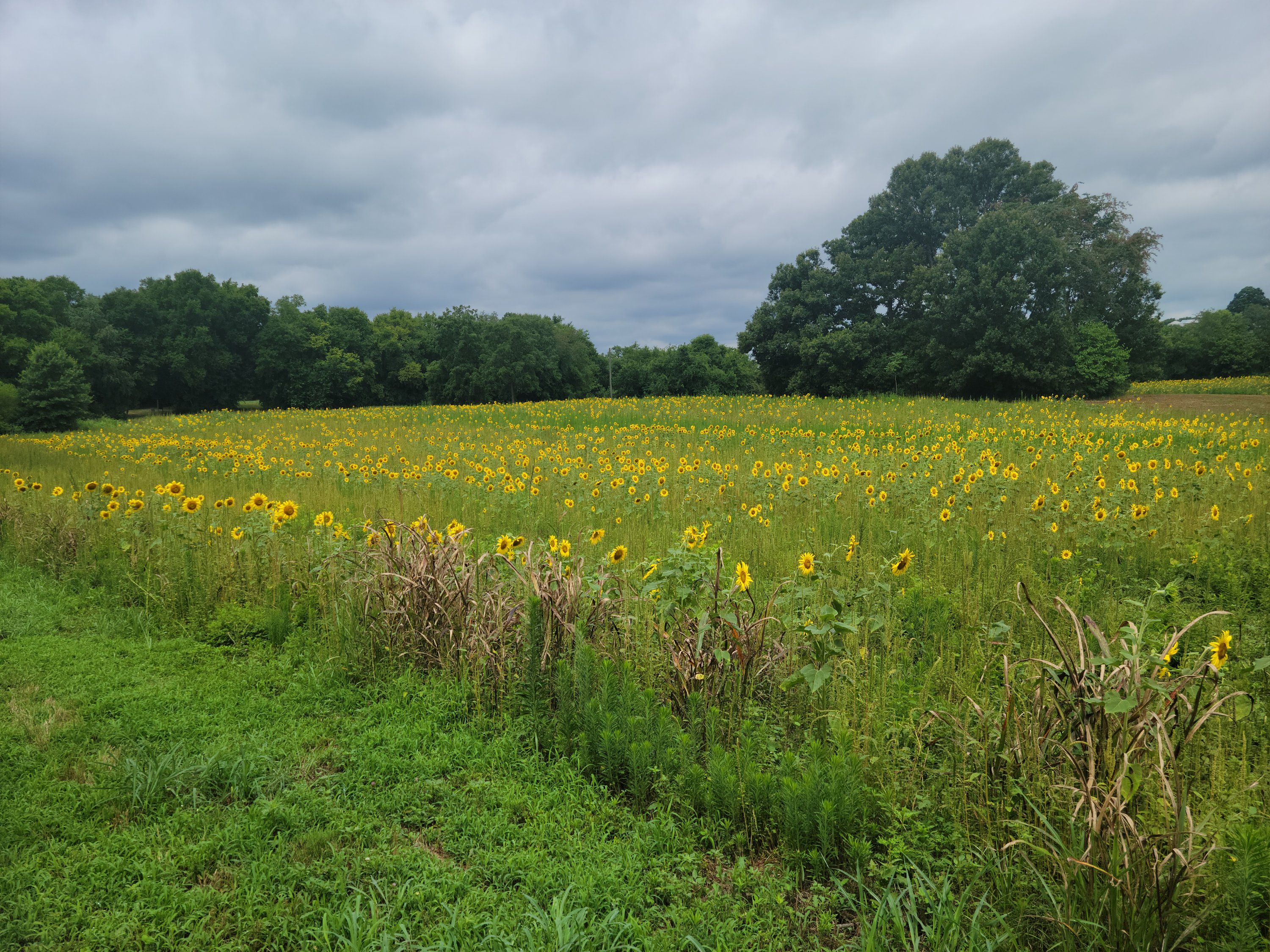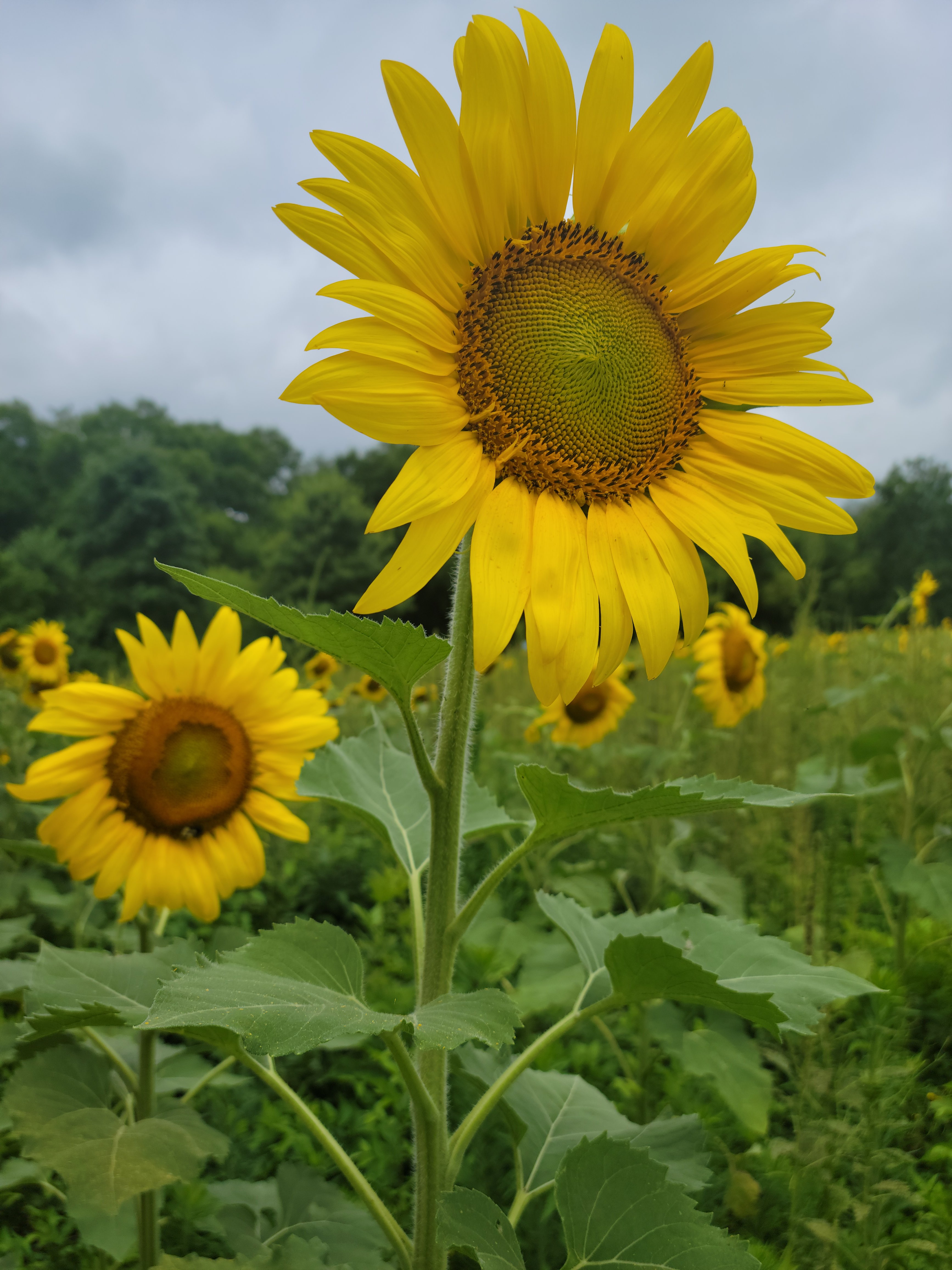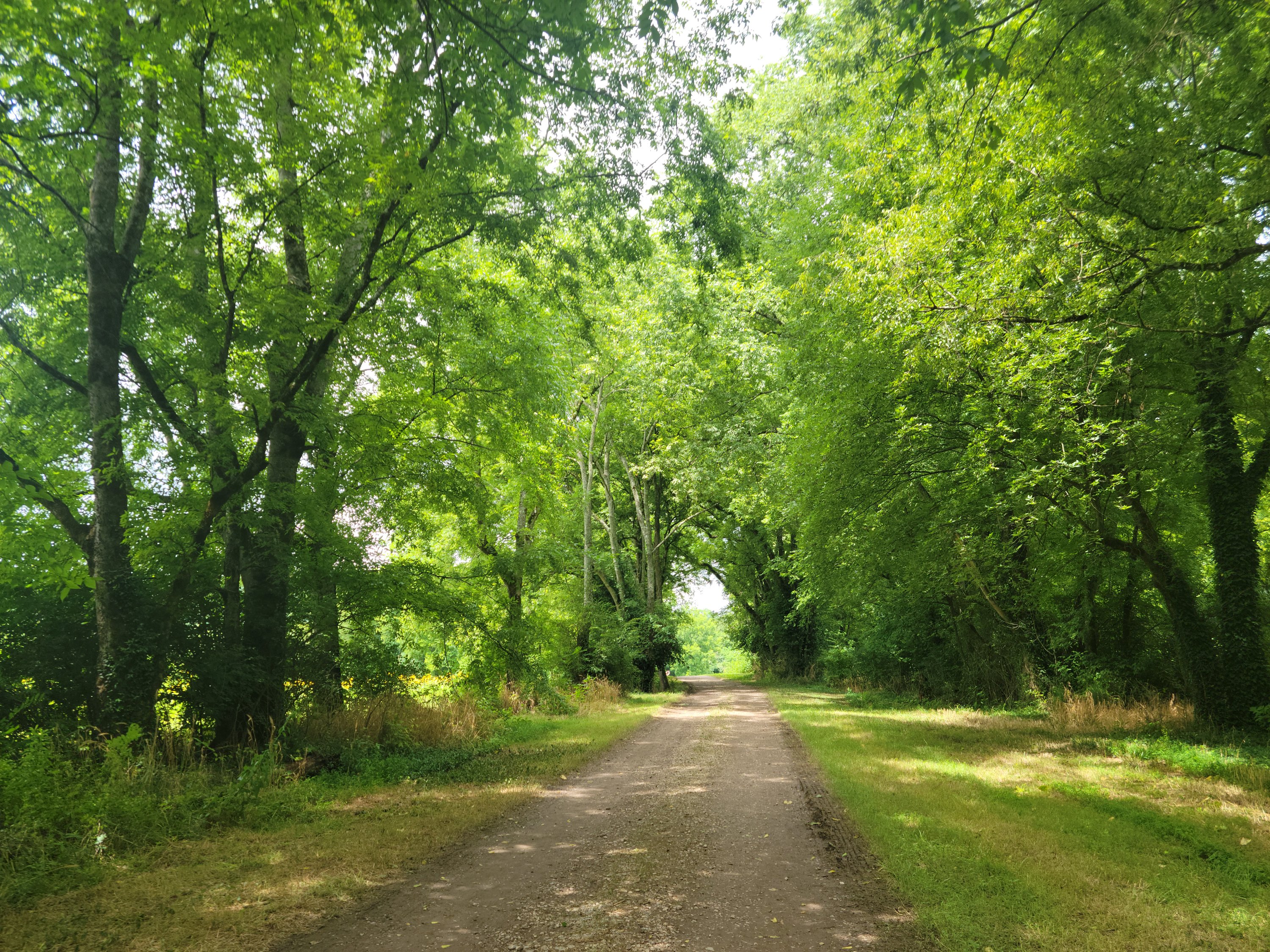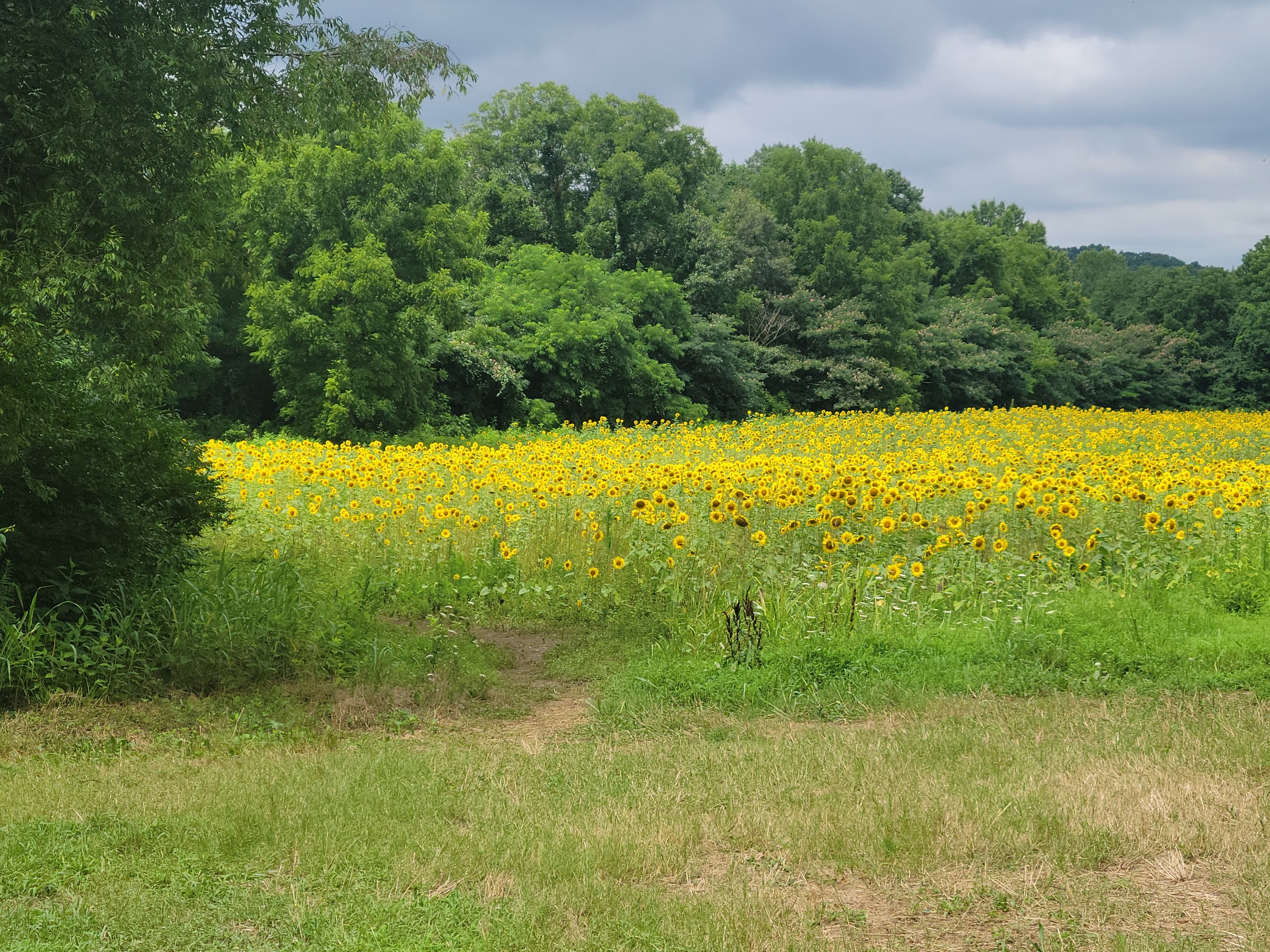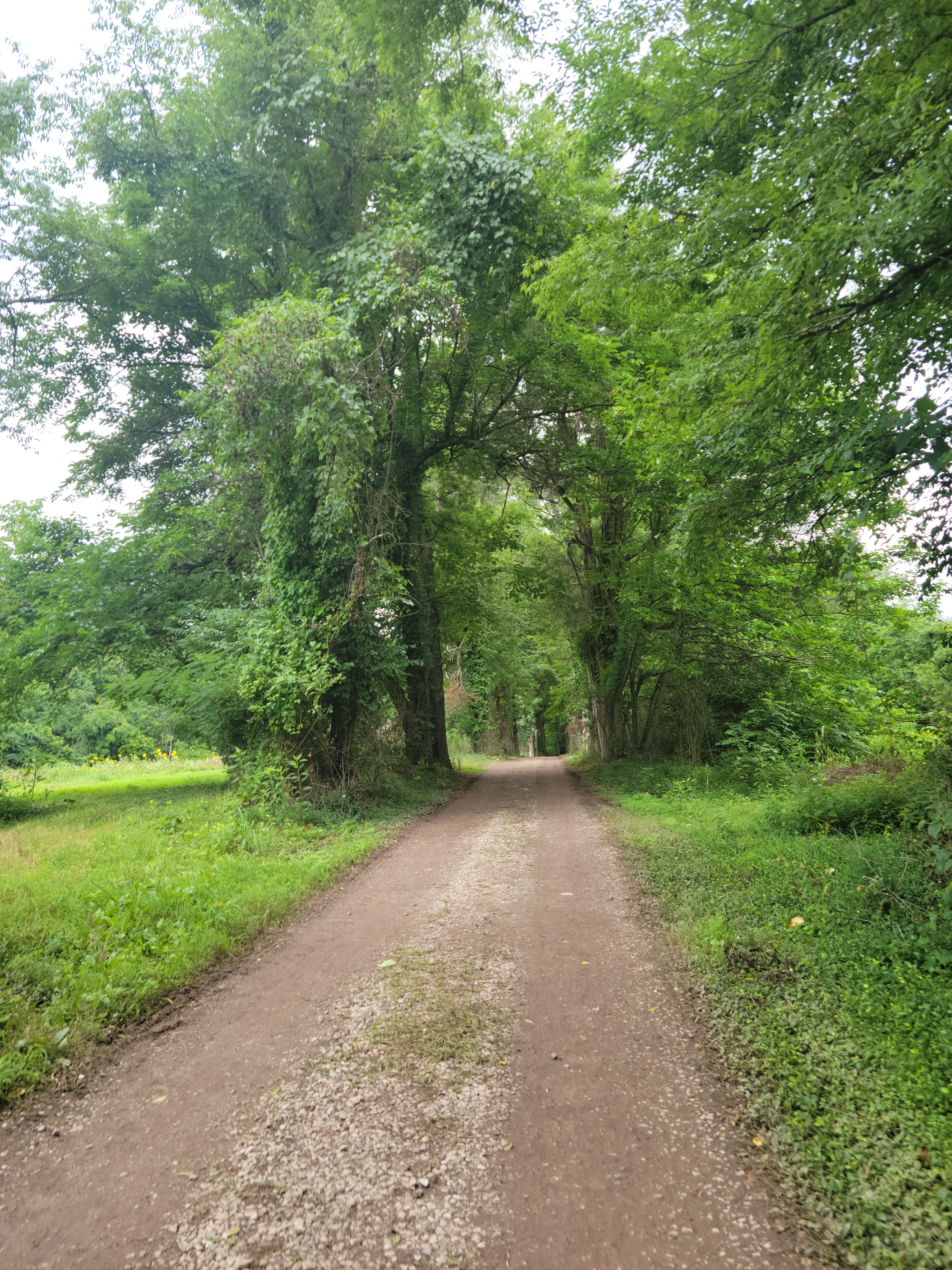Two covid tests done and they both said “negative.” Does it matter the expiry date is 2022 July 13?? So, while my ailing self remains under a soft, cozy blanket reading my way through 576 pages of “The Lincoln Highway”, I will post a few pictures from a walk John and I took on Monday, through fields of glorious sunflowers.

Every other year (this is not an “other” year but planted anyway), the TN Wildlife Resources Agency plants 70 acres of brilliant sunflowers. The fields, located at the Forks of the River Wildlife Management Area, are just a handful of walking miles from our house, a few less if by car. For three weeks beginning in early July, photographers, flower geeks and other gawkers such as us find our way to the Forks of the River where fields of warm yellow sunshine brighten even the gloomiest of days.
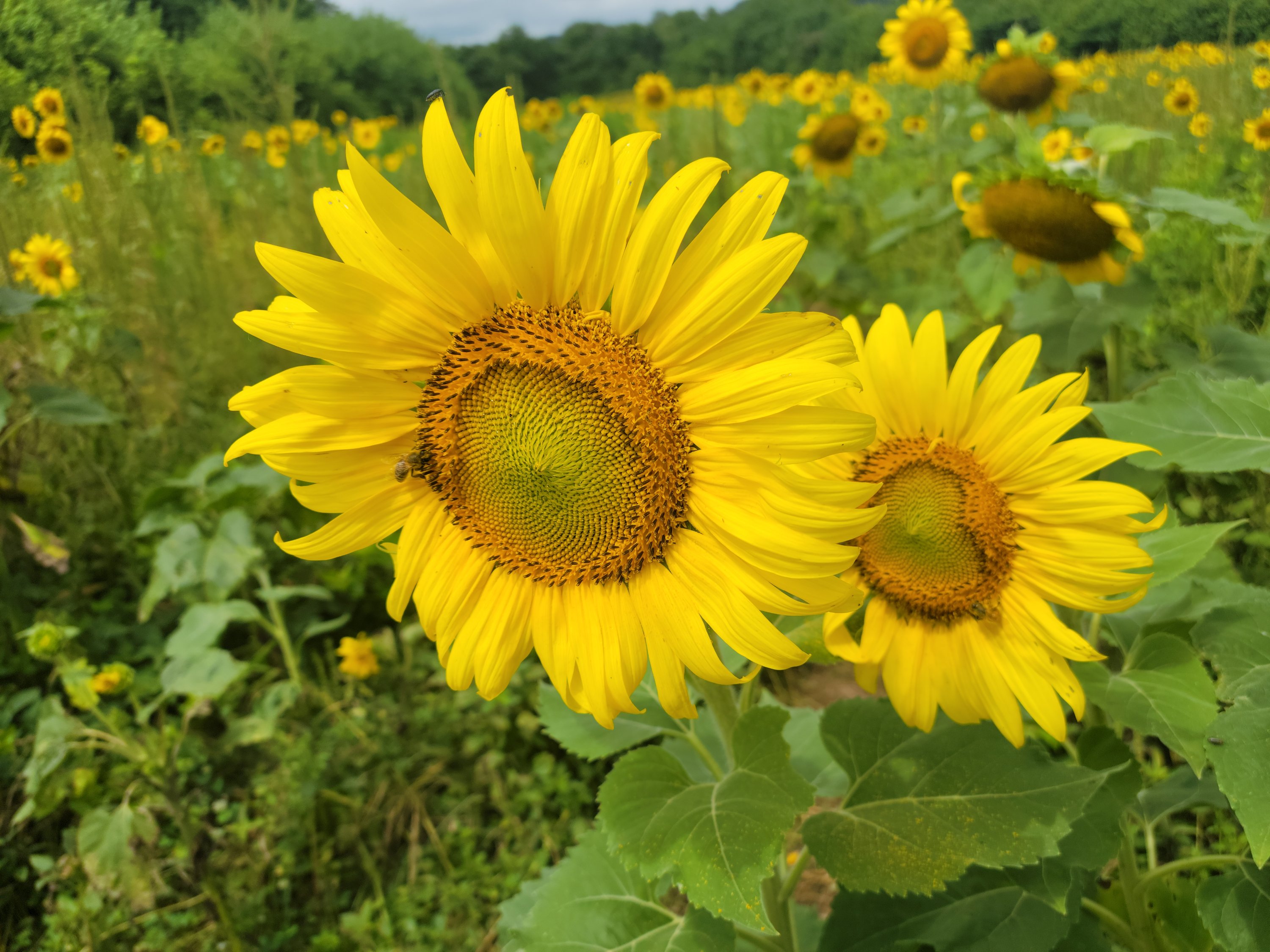
For years, TWRA planted plate sized sunflowers with bold, black centers. The flowers sat perched atop thick, sturdy stems that stood 6 or more feet high (similar appearance to the painting below). But this year’s crop was more genteel with smaller faced sunflowers and shorter, thinner stalks. Different yes, but still quite stunning. And lest we forget, these flowers are not planted for our summer pleasure but to provide food for the mourning doves and songbirds.
